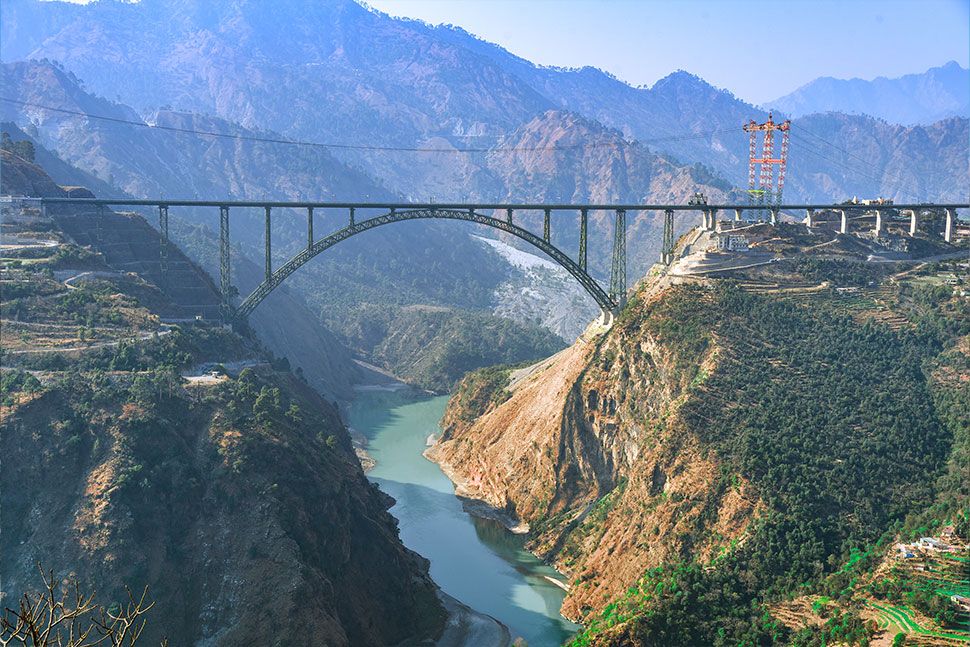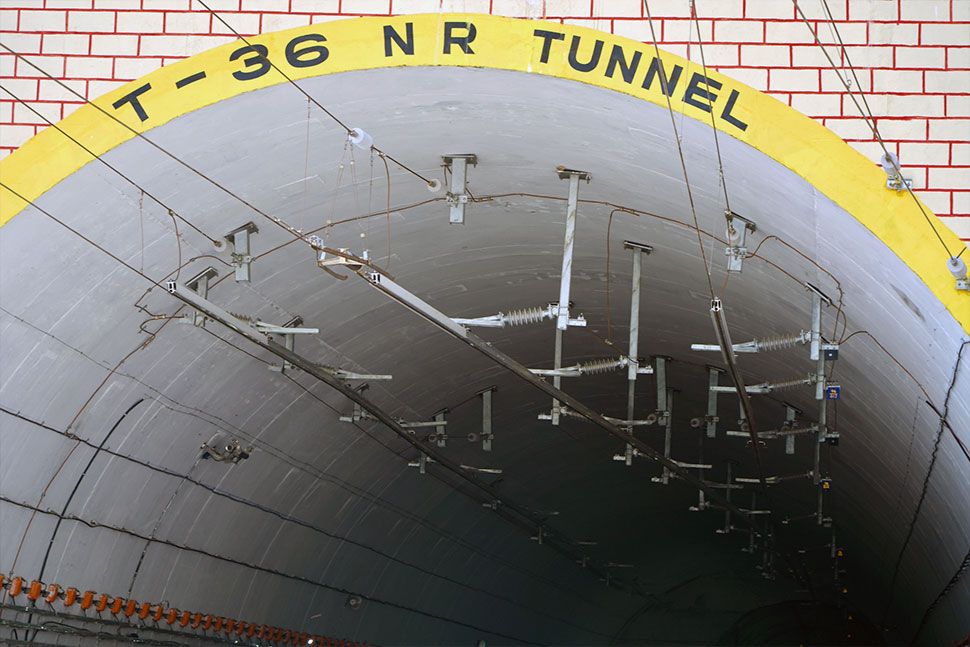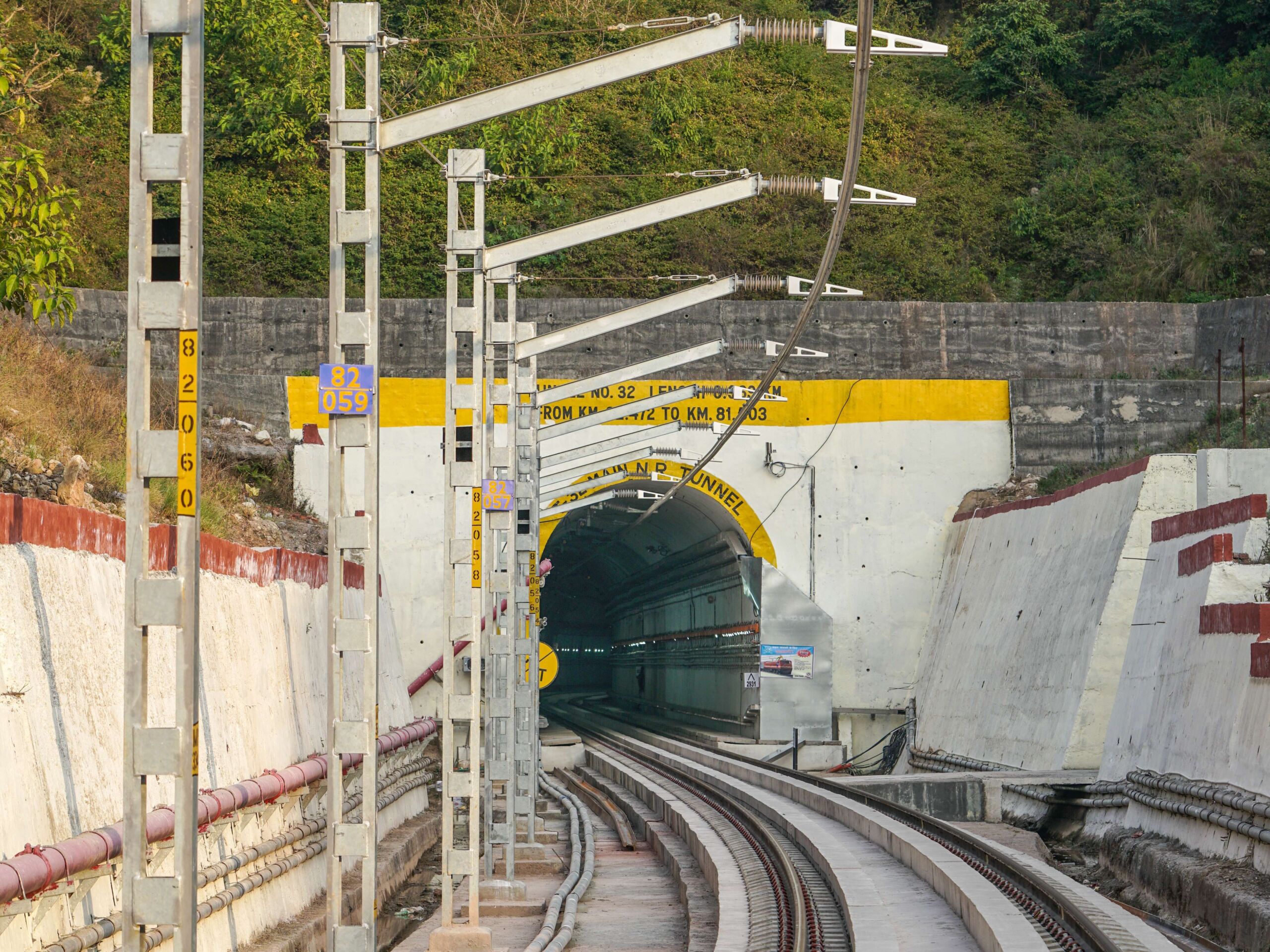Our work involved a range of significant challenges, with 18 tunnels – one over 11 kilometres in length – and 31 bridges, including the iconic Chenab Bridge, which is higher than the Eiffel Tower, calling for precise planning, specific technical solutions, and well-coordinated logistics. The project was further complicated by temperatures well below freezing, high wind loads, and hard-to-access mountainous terrain near the Himalayas.
Our rigid overhead conductor rail system was installed in tunnels, on bridges, and on open sections of track. Parts of the conductor rail had already been installed before the track was constructed, which meant that our planning process was based on precise track geometry data. We integrated additional safety sections (electrical sectioning points) in the long tunnel sections to enable safe and flexible operation. For the numerous bridges and stations, we developed customised support and cantilever systems that could be adapted precisely to suit the respective structural conditions.
We were able to complete the entire planning, material delivery, and installation process, providing a robust and reliable electrification system, in just 18 months. This system will help to allow for sustainable improvements in connectivity and operational efficiency on the USBRL corridor in the future.
In April 2025, the project was one of just five worldwide to receive the Top Railway Projects Award (IRJ Top Projects 2025) from the International Railway Journal.
Focus on the project section – rigid overhead conductor rail system at Dugga railway station and on Bridge 53:






